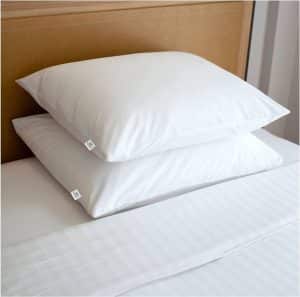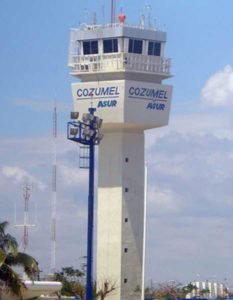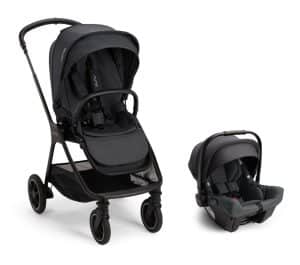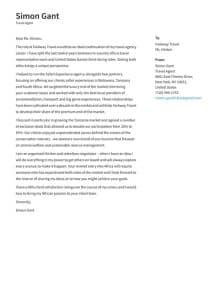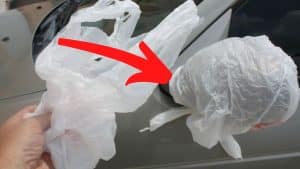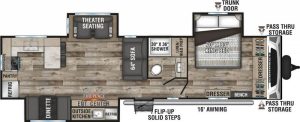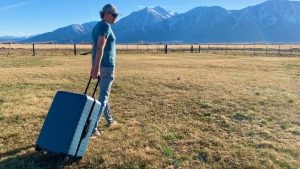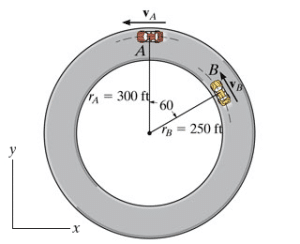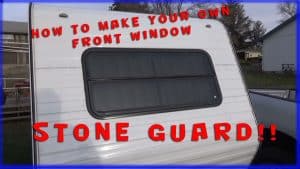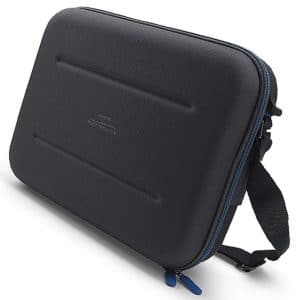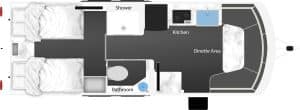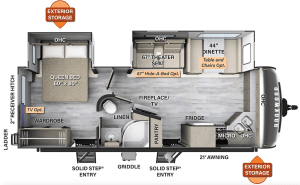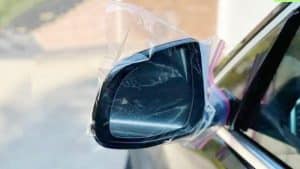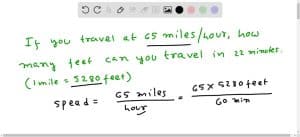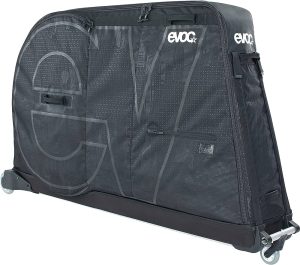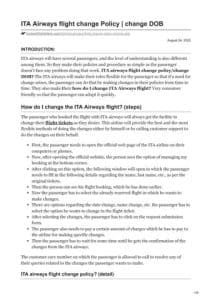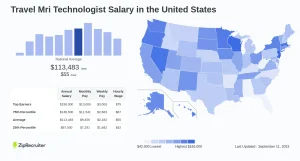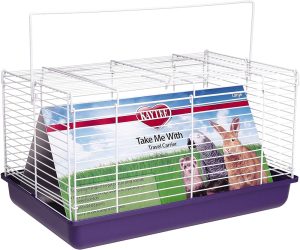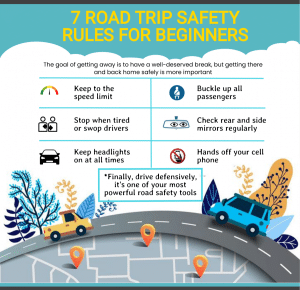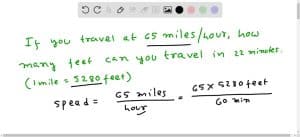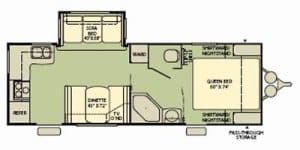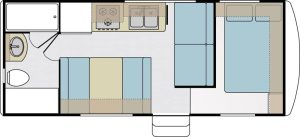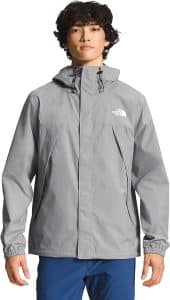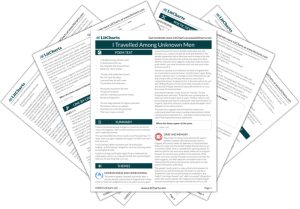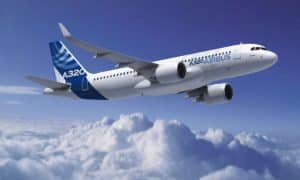Welcome to Hosteliest , your ultimate guide for Hotels and Travel. Today, we’re veering slightly off the beaten path to discuss a surprising travel fact: The average sneeze can cover an astonishing 3/100 of a mile in just 3 seconds. Fasten your seatbelts, it’s about to get interesting!
Title: The Incredible Journey: How the Average Sneeze Can Travel 3/100 Mile in 3 Seconds
Have you ever wondered about the sheer speed and distance a sneeze can travel? Well, you’re not alone. Curiosity calls and science answers! In an astonishing revelation, it’s found that the average sneeze can travel 3/100 of a mile in 3 seconds. Yes – you read that right! It’s a miniature yet mighty journey that can impact your health and perhaps even your holiday plans. So let’s dive in and discover more about this fascinating fact.
Table of Contents
ToggleThe Speed of a Sneeze
Just how fast does a sneeze move? Faster than you might think! A typical human sneeze can reach speeds of up to 100 miles per hour. To put that into perspective, it’s definitely quicker than your jogging pace, and even rivals the speed of some animals! This means that the average sneeze can travel quite an impressive distance.
Calculating the Distance
Now, you must be wondering, how far can a sneeze really go? At peak speed, a sneeze has been estimated to travel roughly 3/100 of a mile in a mere 3 seconds. That’s close to 5 feet every second! With such speed and power, it’s easier to understand why it’s important to cover your nose and mouth when you sneeze, especially when travelling.
The Sneezing Principle
A sneeze is essentially a protective reflex set off by irritation in the nasal cavity. This prompts a powerful release of air and small particles from the lungs through the mouth and nose. And with this release comes the surprising fact that the average sneeze can travel 3/100 mile in 3 seconds.
Implications while Traveling
We all know that good hygiene is critical when traveling, and a sneeze can have more impact than you might think. Picture this: You’re on a bus tour with a group of people. One person sneezes without covering their mouth or nose. Particles can potentially travel up to 15 feet in all directions from the source. Imagine how many people could be affected by that single sneeze!
Sneeze Etiquette – Especially When Traveling
Traveling exposes you to new environments, cultures, and unfortunately, germs. It’s essential to follow ‘sneeze etiquette’ for your health and that of others around you. Always cover your nose and mouth with a tissue or your elbow when you feel a sneeze coming. Carry hand sanitizer and wash your hands regularly. Remember, we’re not just talking about manners here – the average sneeze can travel 3/100 mile in 3 seconds, which means it could potentially reach a lot of people in a short time.
In conclusion, a sneeze is a high-speed, far-reaching phenomenon that can make a significant difference, especially when traveling. So as we pack our bags for our next adventure, let’s also pack some extra awareness and care for our health and those around us. And remember – never underestimate the journey of a sneeze!
Understanding the Distance a Sneeze Can Travel: A Unique Perspective for Hotel and Travel Safety
Understanding the Distance a Sneeze Can Travel: A Unique Perspective for Hotel and Travel Safety
During this time of increased focus on health and safety, understanding the potential spread of germs has become essential within hotels and the travel industry. One component of this is understanding the distance a sneeze can travel.
When a person sneezes, they are expelling droplets from their nose and mouth into the air. These droplets could potentially carry infectious particles such as viruses. Studies have shown that these droplets can travel anywhere from 6 to 27 feet. This variance in distance is due to several factors, including the force of the sneeze, the size of the droplets, and environmental conditions.
Implications for Hotel and Travel Safety
In the context of hotels and the travel industry, understanding the distance a sneeze can travel is critical for developing effective safety protocols. If these droplets can potentially reach up to 27 feet, then social distancing guidelines may need to exceed the commonly recommended 6 feet in certain scenarios.
Ensuring high levels of cleanliness is another key step. High-touch surfaces such as door handles and elevator buttons can become contaminated if a droplet lands on them. As a result, hotels must prioritize regular disinfection of these surfaces.
Ventilation also plays an important role. Properly functioning HVAC systems that circulate fresh air and have effective filtration can help to reduce the concentration of potential infectious droplets in the air.
Finally, wearing masks can play a crucial role in reducing the spread of droplets. By covering the nose and mouth, fewer droplets are expelled into the environment when a person sneezes.
Conclusions
In conclusion, while understanding the distance a sneeze can travel may seem like a minute detail, it has significant implications for hotel and travel safety. By considering these factors, the industry can develop more effective strategies to protect both employees and guests. This is a crucial step in rebuilding consumer confidence in travel and hospitality during these challenging times.
The Role of Hygiene in Hotels amidst the Reality of Sneezes
In the context of hospitality, understanding the power and reach of an average sneeze is paramount. The fact that a single sneeze can travel as far as 3/100 of a mile in just three seconds highlights the necessity for extreme hygiene measures within hotels. This distance, although it may seem insignificant, actually covers a large area in the enclosed space of a hotel. Thus, the spread of germs and viruses within this scenario can be alarmingly quick.
To mitigate this, hotels must have robust cleaning and sanitation protocols. These may include routine disinfection of shared areas such as lobbies and dining halls, frequent cleaning of high-touch surfaces such as doorknobs and elevator buttons, and provision of hand sanitizers at key points. In addition, guests should be encouraged to practice good hygiene, including covering their mouth and nose when sneezing, through signage and reminders from staff.
How Air Travel Can Exacerbate the Speed of Sneezes
Air travel presents its own unique set of challenges when it comes to sneezes. A confined airplane cabin with recycled air presents an ideal environment for the rapid spread of germs. The notion that a sneeze can travel 3/100 of a mile in three seconds gives us a stark understanding of how quickly a disease could potentially spread in an airplane cabin.
Airline companies must take stringent measures to ensure the cleanliness of their fleets. This includes thorough cleanings between flights, the use of HEPA filters to clean the cabin air, requiring masks for passengers and crew, and encouraging passengers to follow good hygiene practices.
Incorporating Health Awareness into Travel Itineraries
Given the facts about sneezes and their ability to spread germs quickly, travelers need to be educated and vigilant. A crucial aspect of travel planning should now include health awareness and protective measures.
This might involve choosing airlines and hotels with visible and effective cleaning protocols or perhaps even changing travel plans during heavy flu seasons. Prevention is better than cure, so it’s also worth considering getting vaccinated, carrying hand sanitizers, and wearing a mask while travelling.
Ultimately, understanding that a sneeze can travel 3/100 mile in 3 seconds can help both businesses and travelers take the necessary precautions to ensure safe and healthy travel.
Frequently Asked Questions (FAQ)
How could the fact that an average sneeze can travel 3/100 mile in 3 seconds potentially affect the cleanliness of a hotel room?
The fact that an average sneeze can travel 3/100 of a mile in about 3 seconds can greatly affect the cleanliness of a hotel room. This is mainly due to the rapid speed and distance germs can cover, potentially causing a wide range of illnesses.
The germs expelled when someone sneezes have the potential to land on surfaces within a room, such as door handles, television remotes, or even bed linens. These are all surfaces which subsequent guests may come into contact with. Further, if the germs are airborne, they could also linger in air conditioning units or on other hard-to-clean surfaces.
This creates a potentially hazardous environment for subsequent guests, particularly those who may be immune-compromised. Therefore, it underlines the importance of rigorous and thorough cleaning protocols within hotels to ensure guest safety.
A consistent and detailed cleaning routine is essential to minimize the risk of disease transmission within a hotel room. It’s not just about maintaining an aesthetically pleasing environment, but more importantly, ensuring a safe and hygienic space for each guest staying in the room.
In addition, providing hand-sanitizers and encouraging their use can also aid in maintaining a clean and safe environment. Therefore, understanding the travel speed and range of a sneeze can significantly help reinforce the importance of cleanliness in the hospitality industry, especially in hotels.
Are there any preventative measures hotels employ considering an average sneeze can travel quite far in just a few seconds?
In response to concerns about the spread of disease, many hotels have indeed taken specific preventative measures. Firstly, regular and thorough cleaning is practiced to achieve high standards of cleanliness and hygiene. The use of disinfectants proven to kill bacteria and viruses is prevalent.
Additionally, some establishments have adopted the use of high-efficiency particulate air (HEPA) filters, which are capable of filtering out a significant majority of airborne particles, including pathogens that may be carried in a sneeze.
Secondly, hotels also encourage the practice of social distancing in common areas such as lobbies and dining rooms. By providing ample space between seating and standing areas, it’s possible to minimize the likelihood of airborne particles reaching another person within the few seconds they are airborne.
Another measure is the installation of physical barriers, such as plexiglass shields, at reception desks to reduce the transmission of respiratory droplets.
Coupled with the encouragement of wearing masks in public spaces, these measures can help provide a safer environment for both guests and staff in the hotel industry.
How does the knowledge that sneezes can travel 3/100 mile in three seconds influence the safety protocols during group travel or guided tours?
The knowledge that sneezes can travel 3/100 mile in three seconds profoundly influences the safety protocols during group travel or guided tours, especially amidst the COVID-19 pandemic. This fact sheds light on how quickly germs can spread, emphasizing the importance of adhering to hygiene measures and social distancing guidelines.
In response to this, all participants should be educated about the potential risks and advised on the necessary precautions. Measures would include mandatory mask-wearing, particularly in enclosed spaces like hotels or tour buses, where the chances of pathogen dispersal are higher. Masks serve as a physical barrier against pathogen-loaded droplets that are expelled during sneezing.
Proper respiratory etiquette, such as sneezing into a tissue or elbow, should be promoted among the group members to limit the spread of germs. Hand hygiene also plays a crucial role: it’s vital to encourage regular hand washing with soap and water or using an alcohol-based hand sanitizer if soap and water aren’t available.
Group organizers should ensure the use of bigger vehicles for transportation or reduce the number of people in one group to maintain safe physical distancing. Crowded places should be avoided whenever possible, and outdoor activities are preferred over indoor ones.
In hotels, regular sanitization of high-touch areas is fundamental. Spaces like reception desks, elevators, door handles, and rooms should be cleaned regularly using suitable disinfectants. Room service should be prioritized over buffet systems to reduce contact between guests.
Overall, understanding the fast spread of sneezes needs to prompt tighter safety regulations to protect all individuals in hotels or during travel. Awareness and adherence to these safety measures are essential in reducing the risk of disease transmission.
In conclusion, the impact of a sneeze in a hotel or on a journey cannot be underestimated, peculiarly as we’ve discovered that the average sneeze can travel 3/100 miles in 3 seconds. This serves as an essential reminder for all travelers and hotels alike to always prioritize hygiene and safety measures. Keeping our surroundings clean, practicing good hand hygiene, wearing masks when necessary, and maintaining social distance can help to create a safe environment for everyone. As we continue to navigate this new normal, let us remember that our collective efforts can make significant strides in ensuring secure and enjoyable travel experiences. Happy and safe travels to all!


